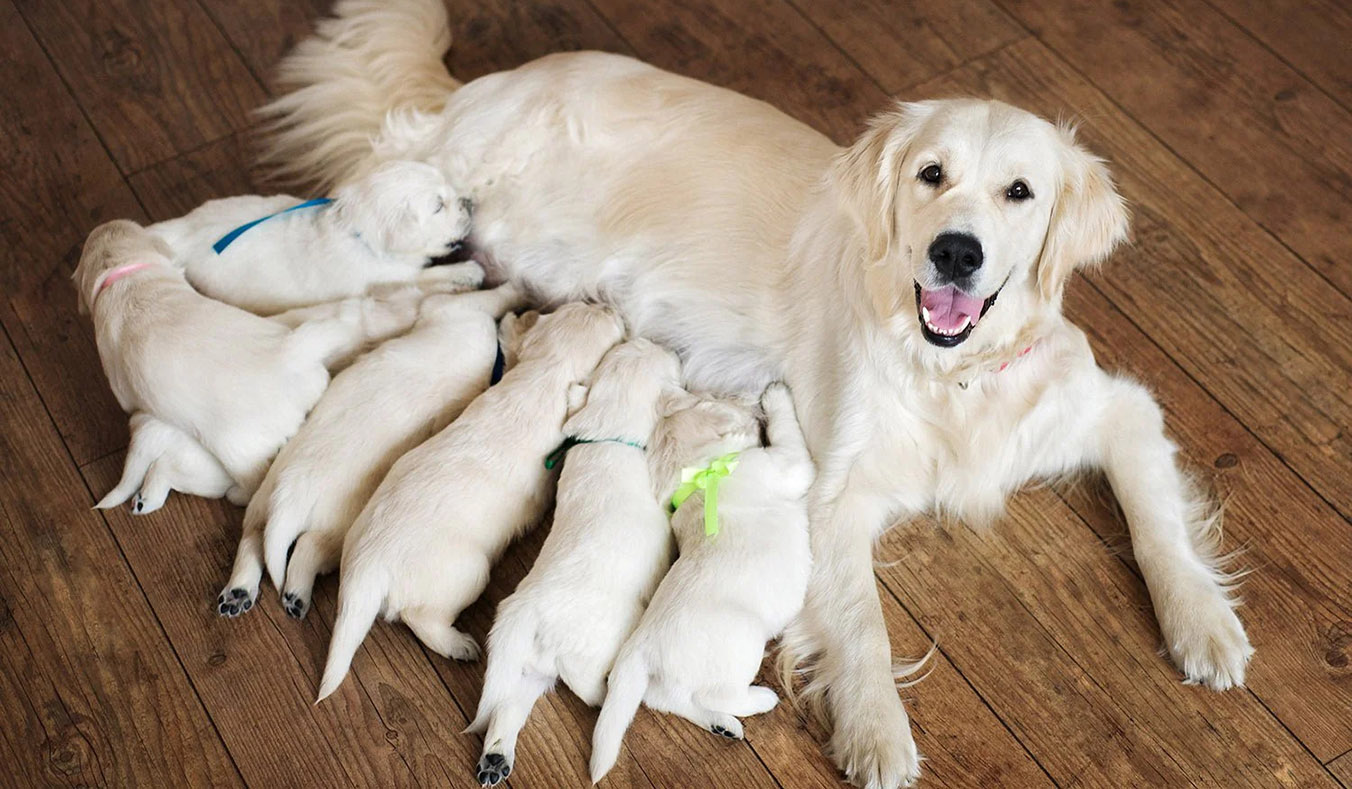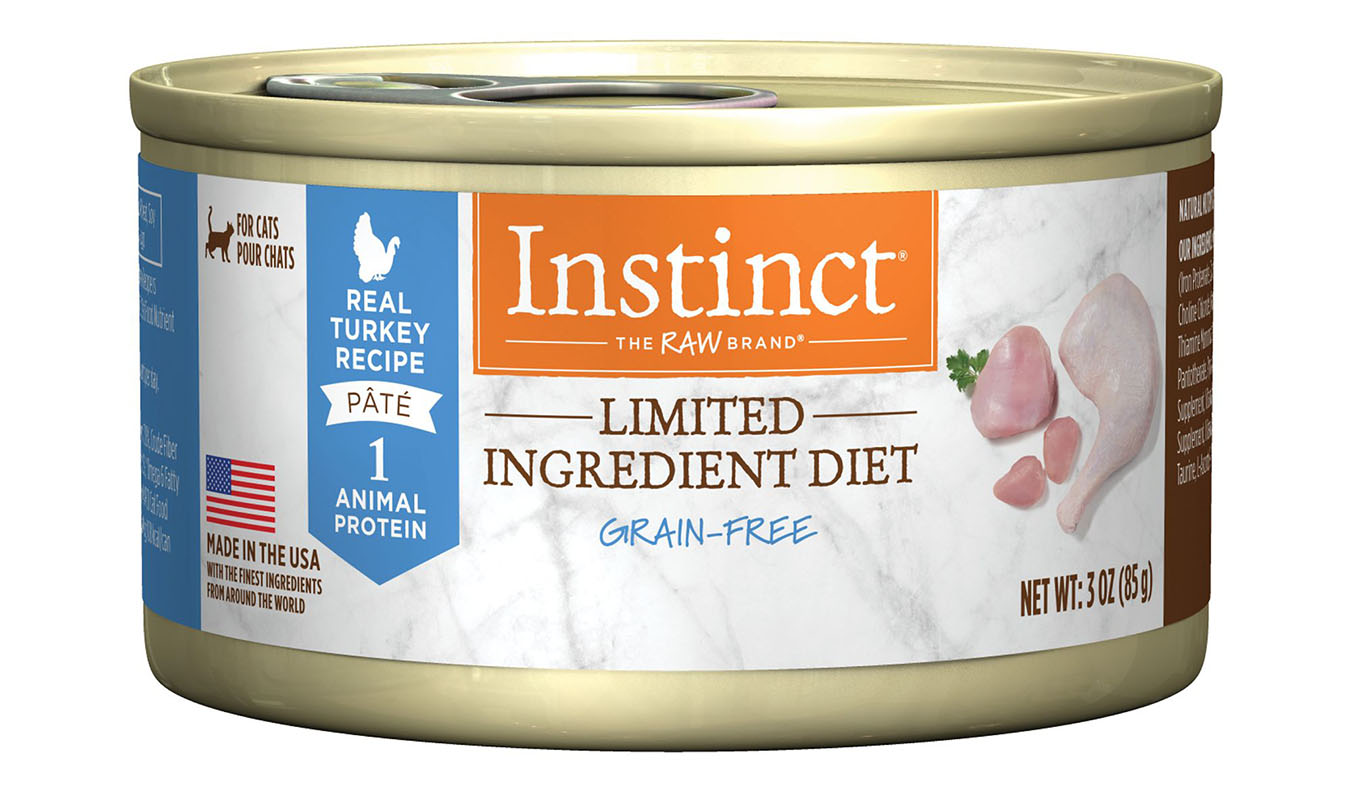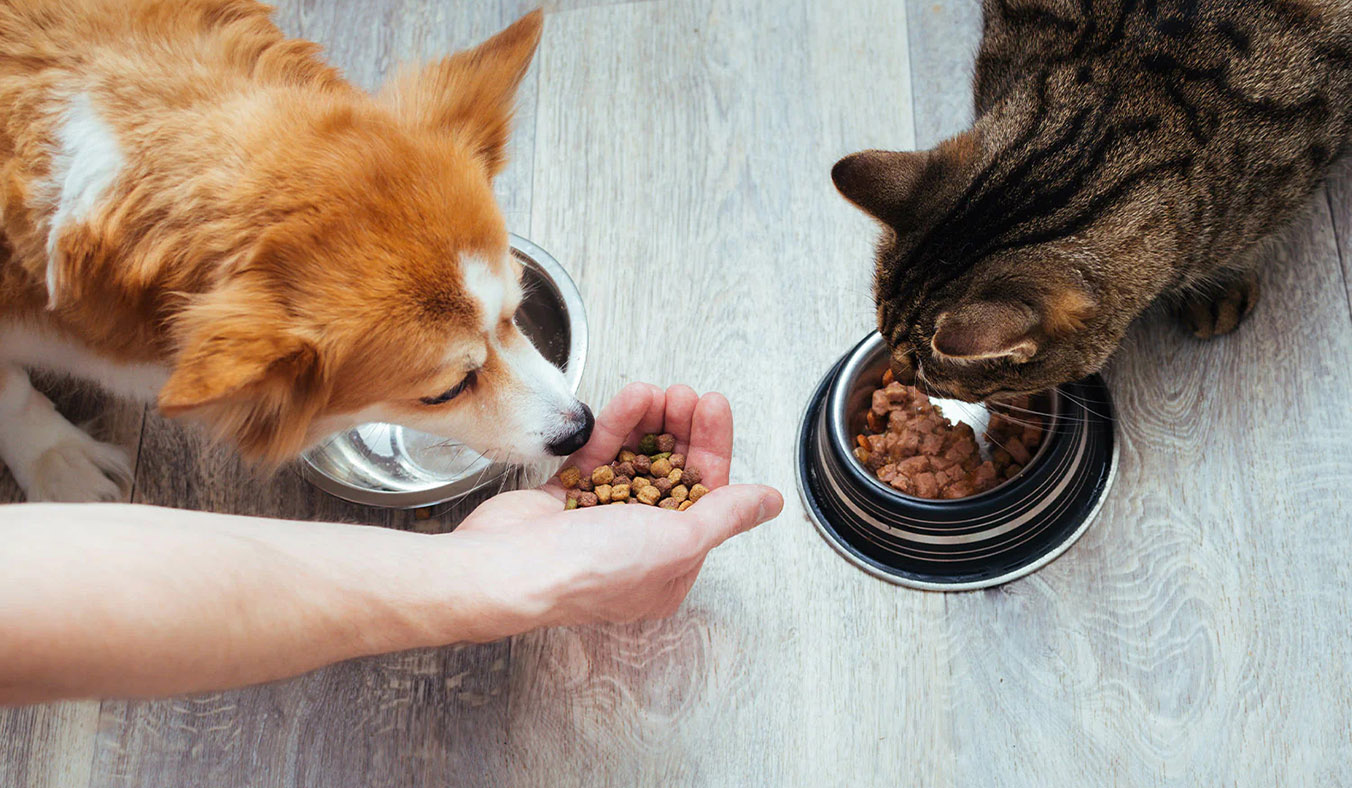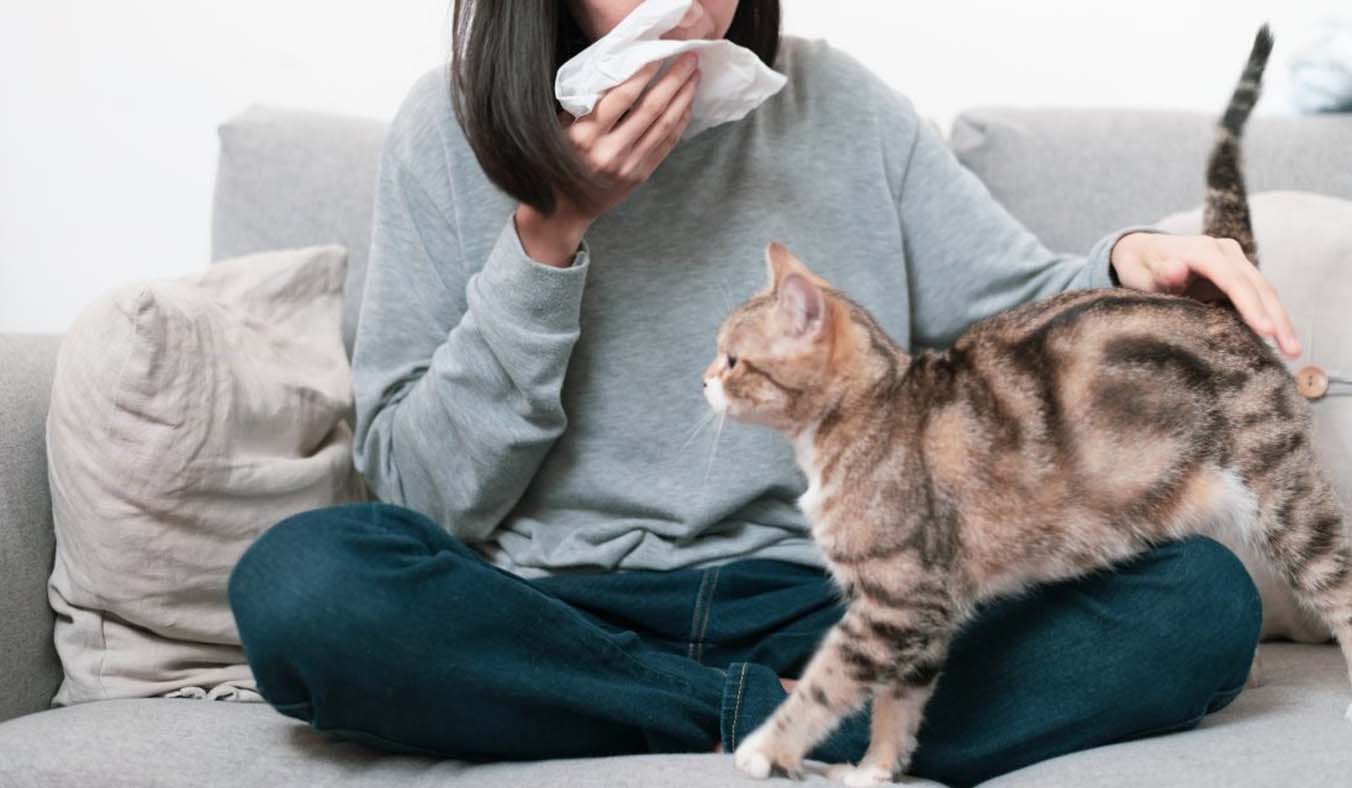It’s official: your dog is pregnant and will soon give birth to a litter of beautiful puppies. Although nature takes its course, vigilance is essential during this delicate period. Dogs can give birth to a litter ranging from 4 to 10 puppies, depending on their size. Just like in humans, preparing for the birth is crucial, and the delivery is a critical time where having a supportive presence can be very comforting for your dog. It is important to know how to prepare for the birth, assist during labor, and monitor the health of your dog and her puppies in the initial weeks. Ready for a canine prenatal class? Deep breath, exhale, and pant! Everything will go smoothly…
Comprehensive Guide to Canine Pregnancy and Whelping
Understanding Canine Pregnancy
To determine if your dog is pregnant, mating should ideally occur around 10 days after the onset of her heat cycle. Here’s what you should know about canine heat cycles and pregnancy:
- Identifying Heat Cycles: Your dog’s heat cycle is characterized by a bloody discharge, swelling of the vulva, and changes in behavior such as decreased obedience. Heat cycles generally happen every 6 to 8 months, though this can vary based on breed and individual health.
- Gestation Period: Once fertilized, a dog’s pregnancy lasts approximately 63 days (about 9 weeks), though this can vary slightly depending on the breed and size. Larger breeds may have slightly longer gestation periods.
Early Signs of Pregnancy:
- Increased Appetite and Weight Gain: A pregnant dog will show a noticeable increase in appetite and gradual weight gain.
- Abdominal Changes: Her abdomen will gradually expand as the puppies develop.
- Swollen Mammary Glands: One of the most prominent signs is the swelling of the mammary glands, which may start producing milk towards the end of pregnancy.
- Shorter Breath: As the pregnancy progresses, her breathing may become more rapid or shallow.
- Behavioral Changes: Hormonal changes may cause her to become more irritable, tired, or unusually affectionate. Early in pregnancy, she might experience nausea leading to a temporary decrease in appetite.
Veterinary Consultation: If you notice any unusual symptoms or have concerns, consult your veterinarian for an accurate diagnosis and advice on how to manage the pregnancy.
Preparing for the Birth
Preparation is essential to ensure a smooth whelping process. Here’s what you need to consider:
- Estimate the Due Date: Knowing the date of mating allows you to estimate the due date, typically around 63 days from conception. This helps in preparing for the birth at the right time.
- Create a Whelping Area: Design a quiet, comfortable, and warm space for your dog to give birth. This area should be away from other pets and children to minimize stress. Use a whelping box with clean, soft bedding to provide a safe environment for the puppies.
Supplies for Whelping:
- Warmth Supplies: Puppies are unable to regulate their body temperature effectively, so ensure you have:
- Blankets and Bedding: To keep the area clean and comfortable.
- Heat Lamp or Heating Pad: To provide consistent warmth. Ensure the heat source is safely positioned to avoid overheating or burns.
- Space Heater: If the room temperature needs to be adjusted.
- Clean Towels: Have several clean towels on hand to gently dry and clean the puppies immediately after birth.
- Sterilized Scissors: To cut the umbilical cords if the mother does not do so herself. Ensure the scissors are properly sterilized to prevent infection.
- Compresses and 70% Alcohol: For disinfecting and cleaning any areas that need it.

Additional Preparations:
- Monitor Your Dog: Watch for signs of labor, such as nesting behavior or restlessness. Be prepared to assist if complications arise or if the labor is prolonged.
- Emergency Contact: Have your veterinarian’s contact information readily available in case of emergencies or complications during the birthing process.
Educate Yourself: Consider watching instructional videos or consulting your vet for a demonstration on how to assist with the birthing process and care for the puppies.
Post-Birth Care
- Immediate Care for Puppies: Once born, ensure each puppy is breathing and nursing. The mother will usually lick and clean them, but assist if necessary.
- Postpartum Monitoring: Continue to monitor your dog and her puppies closely. Ensure the mother is nursing properly and that the puppies are gaining weight. Regular check-ups with your vet will help ensure the health of both the mother and her puppies.
Proper preparation and care are essential for a successful whelping experience. By staying informed and ready, you can help ensure a healthy start for your dog’s new puppies.
Assisting During Labor and Post-Birth Care for Your Dog
Assisting During Labor
Recognizing Signs of Labor:
- Behavioral Changes: Expect to see signs of anxiety and restlessness. Your dog might dig, pant, or seek out quiet, dark places to give birth. She may also become more clingy or seek reassurance from you.
- Physical Signs: Look for a visibly swollen vulva, increased milk leakage from her nipples, and noticeable contractions as her belly tightens and relaxes.
How to Assist During Labor:
- Stay Calm: Your dog can pick up on your emotions, so maintaining a calm demeanor is crucial. If she seems receptive, stay close to her, offer gentle pets, and speak softly to provide comfort.
- Prepare for Birth: Have your whelping supplies ready, including clean towels, sterilized scissors, and disinfectant. You may need to assist with tasks such as cutting the umbilical cords or breaking the amniotic sacs if the mother is unable to do so.
- Umbilical Cord Cutting: If you need to cut the umbilical cords, do so with sterilized scissors and tie off the cord with dental floss or thread if necessary to prevent bleeding.
- Breaking the Amniotic Sac: Gently tear the sac if the mother doesn’t do it herself, and clear the puppy’s airway by rubbing it with a clean, dry towel to stimulate breathing.
Immediate Care for Each Puppy:
- Cleaning: Gently wipe each puppy with a warm, damp towel to remove amniotic fluid and stimulate circulation. Ensure that the area around the umbilical cord is clean and dry.
- Monitor Behavior: If the mother displays aggression or discomfort, back off to avoid stress. She may be protective or overwhelmed, which can make her behavior unpredictable.
Caring for Your Dog and Puppies Post-Birth
Nursing and Hygiene:
- Feeding: Ensure that each puppy is nursing properly. The mother should nurse her puppies every 2 to 3 hours initially. Monitor the feeding to ensure all puppies are getting enough milk.
- Check for Adequate Milk Supply: If a puppy seems weak or is not gaining weight, check that the mother’s milk supply is adequate. Consult a vet if any issues arise.
- Mammary Cleanliness: Before each feeding, clean your dog’s nipples with a clean towel to reduce the risk of infection. This also helps in keeping the puppies healthy and promotes better milk flow.
- Comfort and Safety: Arrange the whelping area to ensure it is safe and comfortable. Check frequently to ensure that no puppies are being accidentally crushed or left in an unsafe position.
Handling Potential Issues:
- Bottle Feeding: In case the mother cannot nurse effectively, have puppy milk replacer and bottles ready. Follow the instructions on the milk replacer for proper preparation and feeding.
- Feeding Schedule: Bottle-fed puppies need to be fed every 2 to 3 hours, just like they would with their mother. Ensure they are gaining weight and growing steadily.
- Post-Weaning Care: After weaning, gradually introduce solid food to the puppies while still allowing them time with their mother for emotional bonding. Avoid separating the puppies from their mother immediately after weaning to support their emotional and social development.
Veterinary Support:
- Regular Check-Ups: Schedule follow-up visits with your veterinarian to ensure the health of both the mother and the puppies. Regular check-ups will help identify and address any health concerns early on.
- Emergency Contacts: Keep the contact information of an emergency vet handy in case any unexpected issues arise during the birth or post-birth period.
By being well-prepared and attentive during the whelping process, you can help ensure a smooth delivery and healthy start for both your dog and her puppies.

Additional Recommendations
The process of pregnancy, labor, and nursing can be challenging for both the dog and her owner. It is highly recommended to seek advice from a veterinarian before the birth. If you are inexperienced, some organizations offer volunteer assistance for whelping. Additionally, if your dog is unable to nurse, contact animal shelters that often have milk replacers or can help with feeding. Don’t hesitate to seek help for the well-being of your four-legged companion.
By following these guidelines and being well-prepared, you can ensure a smoother birthing process for your dog and a healthy start for her puppies.



